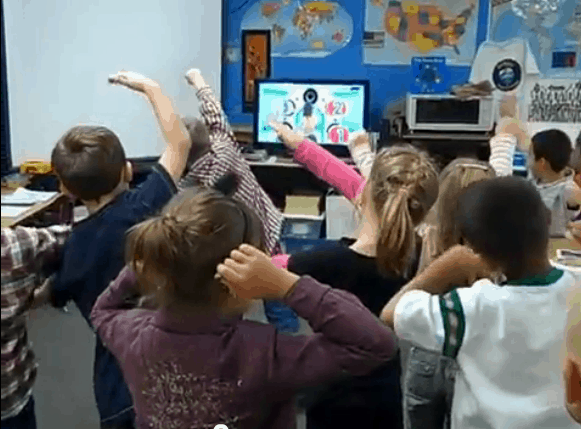Kinesthetically Kinect to Learning

I am sitting here in the San Diego Airport, with my head spinning with new ideas from the incredible – and at the same time incredibly overwhelming – ISTE conference. Yet, as I run back through the list of sessions and events one concept that pops out at me that is just dripping with yet to be tapped potential, is integrating the Xbox Kinect into classroom learning.
An Xbox is not an unfamiliar product for me, personally, that is certain. My 14 year-old-son is a gamer and having time to play the Xbox and Kinect is one of his greatest motivations in life. So, when I called from San Diego to check in with the kids at home and he told me the teachers for his study skills class tested him and classified him as a “physical learner” my mind went directly to Kinect!
Xbox Kinect Is Whowing Up In Classrooms
I had just left an inspiring session all about how a few schools in Chicago had integrated the Kinect into the school libraries and the students were beyond excited. I know if one of my son’s teachers next year allowed him to use some of these strategies being introduced with the Kinect, he would be equally excited not only because he’s a gamer but more because he is a physical, or kinesthetic learner – get it kinesthetic, Kinect? The Kinect’s gesture-based technology lets kids move and interact with what they are learning!
I can already hear the critics arguing- the Xbox is “screentime” and contributes to “brain drain.” I definitely did not see any “brain drain” happening in the Kinect session presented by Lisa Perez from the Chicago Public Schools, Dept. of Libraries where resources are filling up with lessons that integrate math, science, language arts, history, as well as arts and physical education. I see the types of lessons that will make my own son want run to class, and I suspect there would be many other students running right with him if they knew these were the types of lessons they’d be engaging in.
Where National Geographic Meets Kinect
Then we have Kinect National Geographic TV coming out in the fall, which allows students to interact with the nature episodes that we already know are the highest quality when they are produced by National Geographic. Now, in addition to just watching these excellent videos, students can physically interact with and manipulate what is taking place on the screen in order to learn earth science in a completely new way.
Kinect Lessons Learned
I have seen great learning happen on the Kinect in my own house. Last summer my son created an original (and pretty humorous) folk tale for a writing assignment from his Language Arts teacher. When we came home from, he created an Kinect Avatar and told the story dressed like a Native American with the great plains as the background. As he told the story and moved his body to control the avatar’s movements, the Kinect recorded his actual voice. The end result was an incredible digital storytelling production with costume, setting and even special effects. When I asked him what his teacher would think of him taking this written story to a new level, he told me he couldn’t hand it in because the teacher did not want to see anything made on an Xbox.
I can’t wait to help to change that!






0 Comments
Leave a Comment
Your email address will not be published. All fields are required.